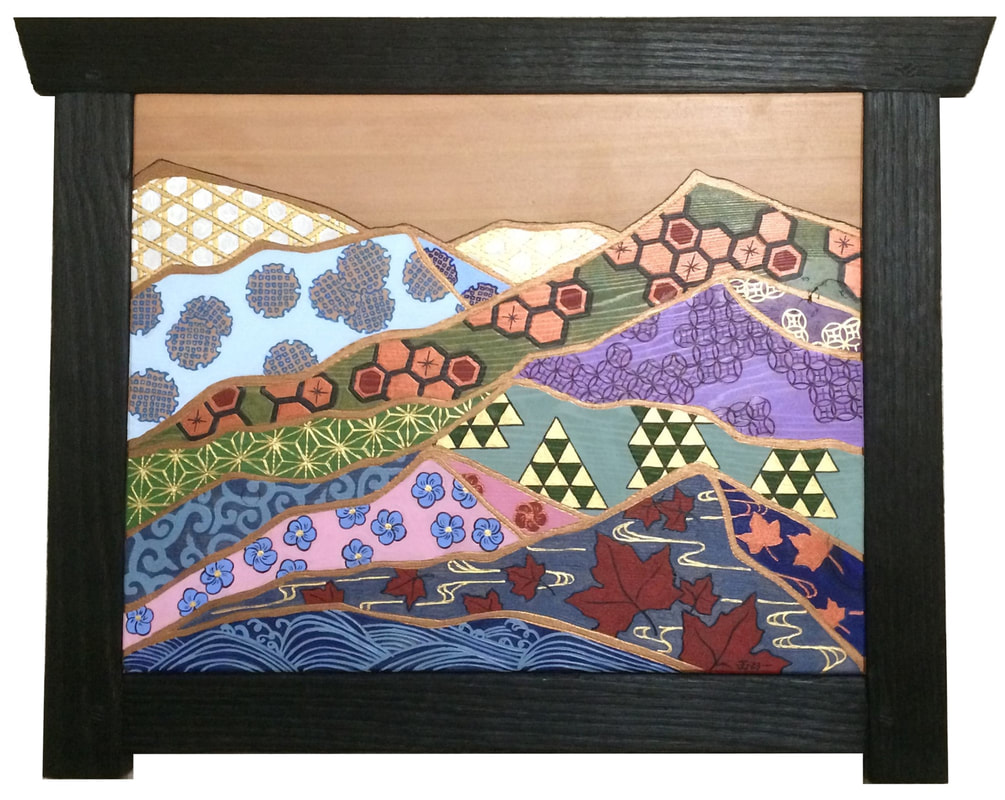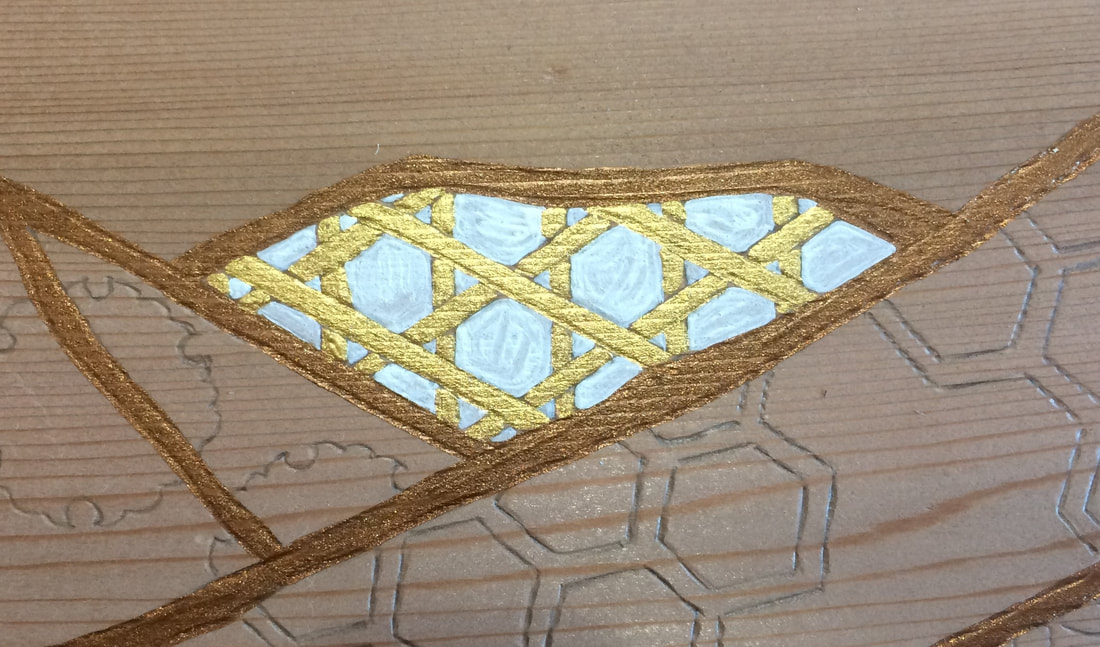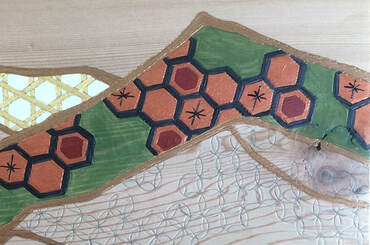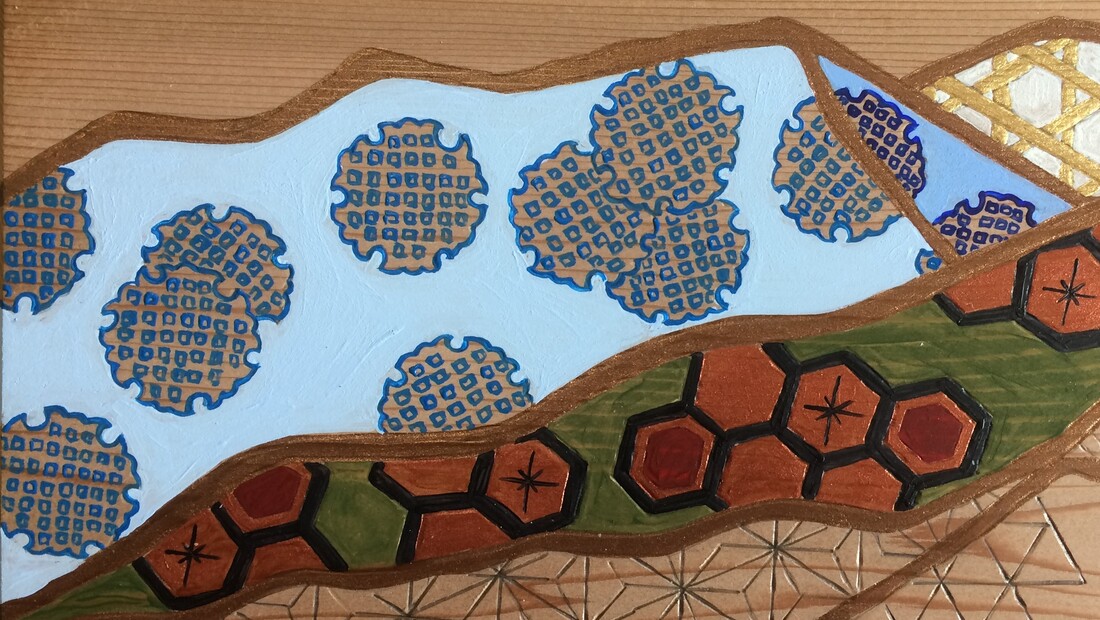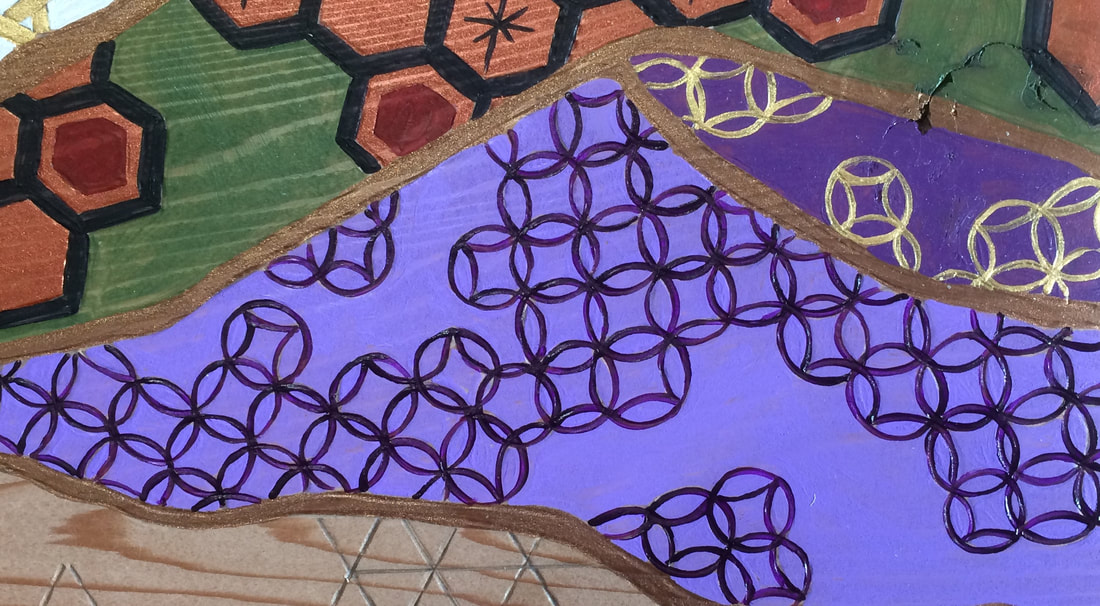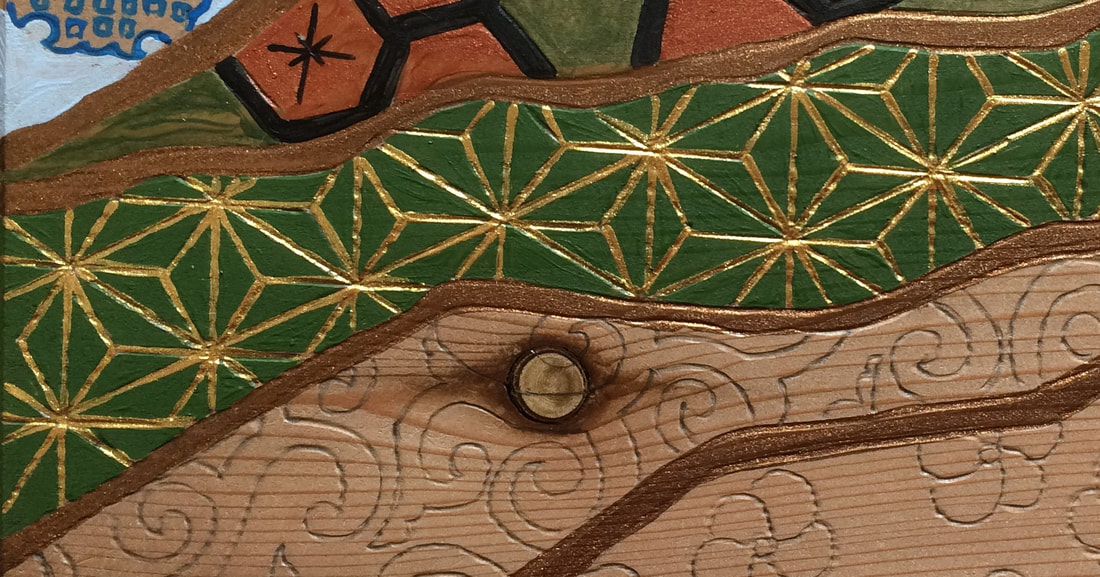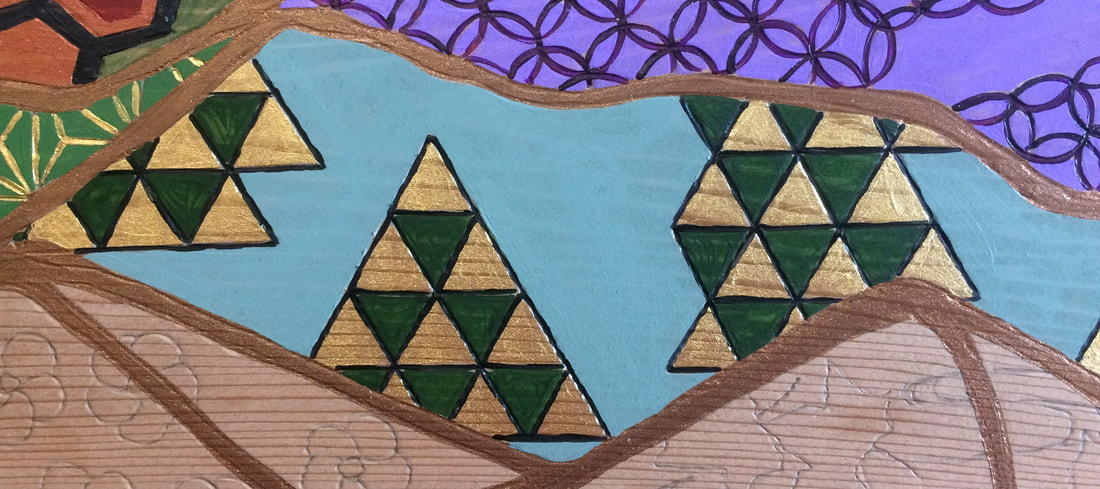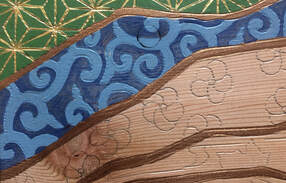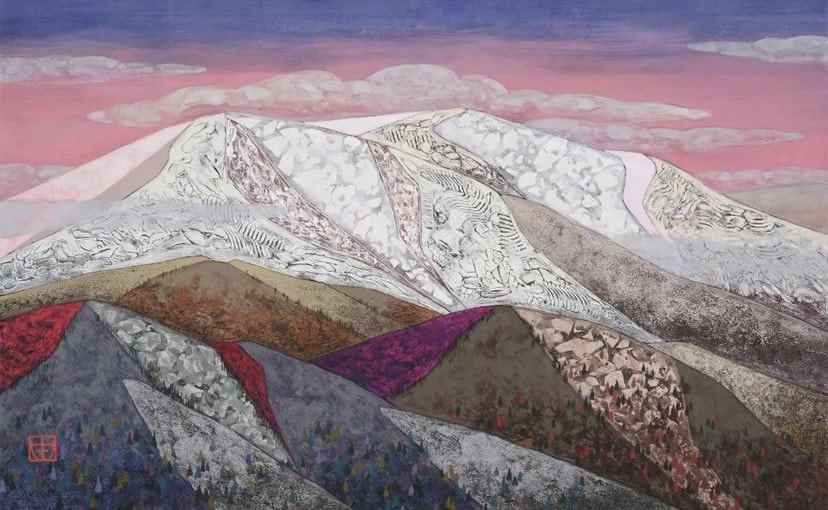WAGARA MOUNTAIN
ACRYLICS ON CEDAR W/RED OAK FRAME
SPRING 2023
ACRYLICS ON CEDAR W/RED OAK FRAME
SPRING 2023
La Conner’s Pacific Northwest Quilt and Fiber Arts Museum would periodically have an exhibit of quilts from Japanese artists. I have loved Japanese kimono and textiles for a long time, and this was always a special exhibit to visit. In the gift shop would be a rich supply of repurposed Japanese textiles for use by quilters. I can imagine quilters buying these remnants and adding them to their “mountainous pile” of cloth in preparation for the next project. Along with this mental image, a painting of mountains by Japanese Nihonga artist Murakoshi Yūko( 村越由子 @murakoara) acted as inspiration for me. Wagara, referred to in the title, are traditional Japanese patterns frequently used in textiles and ceramics. I chose a selection of Japanese patterns in creating my “patchwork quilt” mountain design: basketwork (kagome), tortoise shell (kikkou ), snowflake (yukiwa ), joined circles (shippou), hemp leaf (asanoha), scales (uroko), winding plant (karakusa), plum blossoms, Rinpa maple leaves on water, and Ogata Korin style waves. I made the frame out of red oak using pegged, hand-joined, mortise-and-tenon construction methods. I used the Japanese technique (shou-sugi-ban) of charring and oiling the oak to finish the frame.
DIMENSIONS: HEIGHT: 14 ½ inches
WIDTH: 19 inches
PRICE $450
DIMENSIONS: HEIGHT: 14 ½ inches
WIDTH: 19 inches
PRICE $450
WAGARA PATTERNS:
1. Kagome (籠目) is a hexagonal design inspired by a traditional basket weave. This Wagara is thought to ward off evil.
2. Kikkou (亀甲) is a tortoiseshell design that represents intellect and longevity.
3. Yukiwa is a pattern that represents a snowflake, resembling a round six-petaled flower.
4. Shippou is a pattern of circles overlapping in quarters that resemble petals. Each center forms a shining star. This pattern is regarded as auspicious for the prosperity of descendants, good relationships, and for bringing harmony.
5. Asanoha is a pattern representing hemp leaves. Hemp has strong vitality and grows vigorously without the need for a lot of care, so this pattern was often used on babies’ and children’s kimonos with the hope that they would grow up big and strong.
6. Uroko is a pattern made by a combination of triangles resembling the scales of a snake or fish. Samurai would wear clothing with the pattern as a talisman to protect themselves from harm.
7. Karakusa is a pattern that was introduced into Japan via the Silk Road; the vines stretching in all directions symbolize longevity and prosperity.
8. The final three patterns of plum blossoms, maple leaves floating on water, and waves are all common textile motifs
1. Kagome (籠目) is a hexagonal design inspired by a traditional basket weave. This Wagara is thought to ward off evil.
2. Kikkou (亀甲) is a tortoiseshell design that represents intellect and longevity.
3. Yukiwa is a pattern that represents a snowflake, resembling a round six-petaled flower.
4. Shippou is a pattern of circles overlapping in quarters that resemble petals. Each center forms a shining star. This pattern is regarded as auspicious for the prosperity of descendants, good relationships, and for bringing harmony.
5. Asanoha is a pattern representing hemp leaves. Hemp has strong vitality and grows vigorously without the need for a lot of care, so this pattern was often used on babies’ and children’s kimonos with the hope that they would grow up big and strong.
6. Uroko is a pattern made by a combination of triangles resembling the scales of a snake or fish. Samurai would wear clothing with the pattern as a talisman to protect themselves from harm.
7. Karakusa is a pattern that was introduced into Japan via the Silk Road; the vines stretching in all directions symbolize longevity and prosperity.
8. The final three patterns of plum blossoms, maple leaves floating on water, and waves are all common textile motifs
